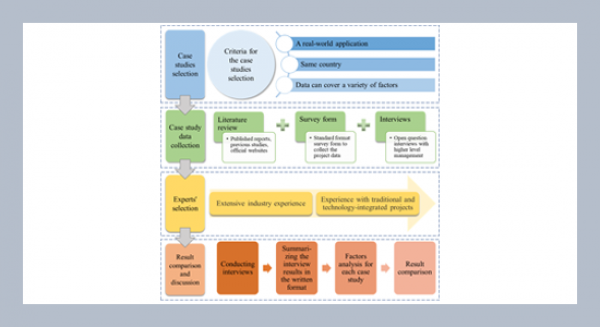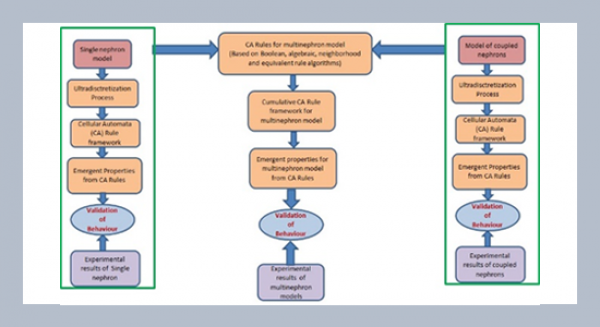REFERENCES
- [1] Reynolds, M. R. Jr. and Stoumbos, Z. G. 1998. SPRT chart for monitoring a proportion. IIE Transactions, 30: 545-561.
- [2] Gultekin, M., Elsayed, E. A., English, J. R., and Hauksdottir, A. S. 2002. Monitoring automatically controlled processes using staticstical control charts. International Journal of Production Research, 40: 2303-2320.
- [3] Elasayed, E. A. and Chen, A. 2000. An alternative mean estimator for processes monitored by SPC charts. International Journal of Production Research, 38:3093-3109.
- [4] Granlund, G. H. 1972. Fourier processing for hand printed character recognition. IEEE Transactions on Computers, 21: 195-201.
- [5] Zahn, C. T. and Roskies, R. Z. 1972. Fourier descriptors for plane closed crves. IEEE Transactions on Computers, 21: 269-281.
- [6] Kuhl, F. P. and Giardina, C. R. 1982. Elliptic Fourier features of a closed contour. Computer Graphics and Image Processing, 18: 236-258.
- [7] Lin, C. S. and Hwang, C. L. 1987. New forms of shape invariants from elliptic Fourier descriptors. Pattern Recognition, 20: 535-545.
- [8] Tien, F. C. and Chang, C. A. 1999. Using neural networks for 3d measurement in stereo vision inspection systems. International Journal of Production Research, 37: 1935-1948.
- [9] Rice, J. A. and Wu, S. M. 1994. Acoustic emission source and transmission path characterization through homomorphic processing. Journal of Engineering for Industry, 116: 32-41.
- [10] Rajmohan, B. and Radhakrishnan, V. 1994. On the possibility of process monitoring in grinding by spark inten- sity measurements. Journal of Engineering for Industry, 116: 124-129.
- [11] Lee, J. 1995. Modern computer-aided maintenance of manufacturing equipment and systems: review and perspective. Computers & Industrial Engineering, 28: 793-811.
- [12] Yang, M. Y. and Kwon, O. D. 1998. A tool condition recognition system using image processing. Control Engineering Practice, 6: 1389-1395.
- [13] Kumar, S. A., Ravindra, H. V., and Srinivasa, Y. G. 1997. In process toll wear monitoring through time series modeling and pattern recognition. International Journal of Production Research, 35: 739-751.
- [14] Choudhury, S. K., Jain, V. K., and Rao, R. 1999. On-line monitoring of tool wear in turning using a neural network. International Journal of Machine Tools & Manufacture, 39: 489-504.
- [15] Ghasempoor, A., Moore, T. N., and Jeswiet, J. 1998. On-line wear estimation using neural networks. Journal of Engineering Manufacture, 212: 105-112.
- [16] Sick, B. 2002. Fusion of hard and soft computing techniques in indirect, online tool wear monitoring. IEEE Transactions on Systems, Man and Cybernetics Part C: Applications and Reviews, 32: 80-91.
- [17] Purushothaman, S. and Srinivasa, Y. G. 1998. A procedure for training and artificial neural network with application to tool wear monitoring. International Journal of Production Research, 36: 635-651.
- [18] Li, X. 2002. A brief review: acoustic emission method for tool wear monitoring during turning. International Journal of Machine Tools and Manufacture, 42: 157-165.
- [19] Everson, C. E. and Hoessein, C. S. 1999. The application of acoustic emission for precision drilling process monitoring. International Journal of Machine Tools & Manufacture, 39: 371-387.
- [20] Sheikh, A. K. 1999. Optimal tool replacement and resetting strategies in automated manufacturing systems. International Journal of Production Research, 37: 917-937.
- [21] Kuo, R. J. and Cohen, P. H. 1999. Multi-sensor integration for on-line tool wear estimation through radial basis function networks and fuzzy neural network. Neural Networks, 12: 355-370.
- [22] Sarma, S. E. and Wright, P. K. 1996. Algorithms for the minimization of setups and tool changes in “simply fixturable” components in milling. Journal of Manufacturing Systems, 15: 95-112.
- [23] Lin, S. and Jungthirapanich, C. 1990. Invariants of three-dimensional contours. Pattern Recognition, 23: 833-842.
- [24] Leou, J. J. and Tsai, W. H. 1987. Automatic rotational symmetry determination for shape analysis. Pattern Recognition, 20: 571-582.
- [25] Yip, R. K. K., Tam, P. K. S., and Leung, D. N. K. 1994. Application of elliptic fourier descriptors to symmetry detection under parallel projection. IEEE Transactions on Pattern Analysis and Machine Intelligence, 16: 277-286.
- [26] Chang, C. A., Lo, C. C., and Hsieh, K. H. 1997. Neural networks and fourier descriptors for part positioning using bar code features in material handling systems. Computers Ind. Engng, 32: 467476.
- [27] Mitchell, O. R., Kim, H. S., Grogan, T. A., and Kuhl, F. P. 1991. Fourier descriptor based generic shape recognition. Technical Paper ACSM-ASPRS Annual Convention (Baltimore, MD.), 5: 279278.
- [28] Grogan, T. A. and Mitchell, O. R. 1983. Shape recognition and description: a comparative study. “Technical Report TR-EE 83-22”, School of Electrical Engineering, Purdue University.
- [29] Kourti, T., Nomikos P., and MacGregor, J. F. 1995. Analysis, monitoring and fault diagnosis of batch processes using multi-block and multiway PLS. Journal of Process Control, 5: 277-284.
- [30] Kourti, T. and MacGregor, J. F. 1996. Multivariate SPC methods for process and product monitoring. Journal of Quality Technology, 28: 409-428.
- [31] Lee, J. 1996. Measurement of machine performance degradation using a neural network model. Computers in Industry, 30: 193-209.
- [32] Lennox, B., Montague, G. A., Frith, A. M., Gent, C., and Bevan, V. 2001. Industrial application of neural networks- an investigation. Journal of Process Control, 11: 497-507.
- [33] Chang, C. A. and Su, C. T. 1995. A comparison of statistical regression and neural network methods in modeling measurement errors for computer vision inspection systems. Computers & Industrial Engineering, 28: 593-603.
- [34] Farago, F. T., 1982. “Handbook of dimensional measurements”. 2nd Ed., Industrial Press, New York.
- [35] Yeralan, S. and Ventura, J. A. 1988. Computerized roundness inspection. International Journal of Production Research, 26: 1921-1935.
- [36] Chen, J. M. and Ventura, J. A. 1995. Vision-based shaped recognition and analysis of machined parts. International Journal of Production Research, 33: 101-135.
- [37] Etesami, F. and Qiao, H. 1990. Analysis of two-dimensional measurement data for automated inspection. Journal of Manufacturing systems, 9: 21-34.
- [38] Roy, U. and Zhang, X. 1994. Development and application of voronoi diagrams in the assessment of roundness error in an industrial environment. Computers & Industrial Engineering, 26: 1126.
- [39] Roy, U. 1995. Computational methodologies for evaluating form and positional tolerances in a computer integrated manufacturing system. International Journal of Advanced Manufacturing Technology, 10: 110-117.
- [40] Car, K. and Ferreira, P. 1995. Verification of form tolerances part II: cylindric- ity and straightness of a median line. Precision Engineering, 17: 144-156.
- [41] Kurfess, T. R. and Banks, D. L. 1995. Statistical verification of conformance to geometric tolerance. Computer Aided Design, 27: 353-361.
- [42] Drozda, T. J. and Wick, C., 1983. “Tool and manufacturing engineers handbook”. 4th Ed., Society of Manufacturing Engineers, Dearborn MI.















